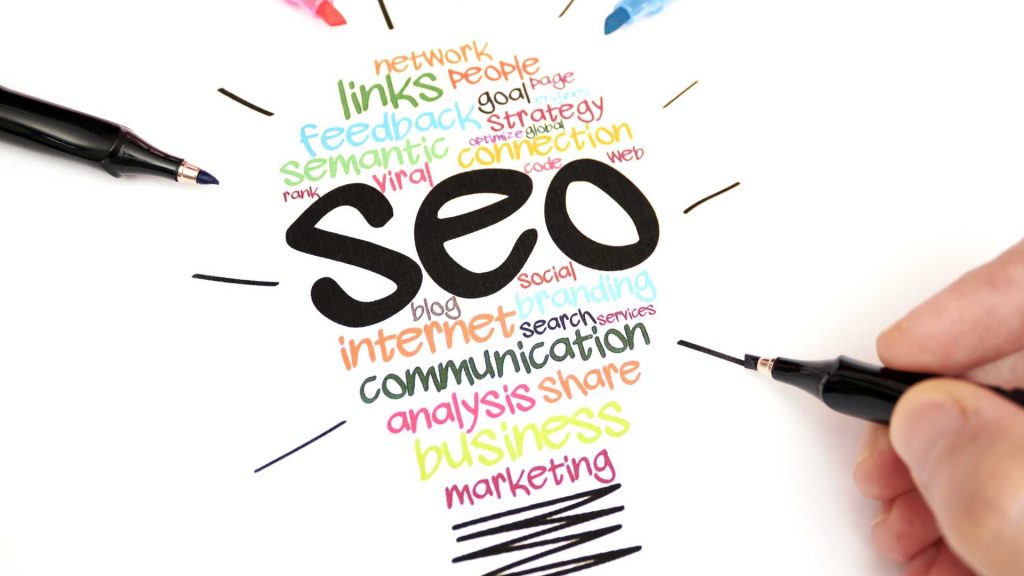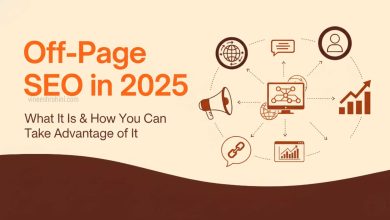How to Optimize Images for SEO : Comprehensive Guide 2025
How to Optimize Images for SEO : In 2025, image optimization has become an essential part of any successful SEO strategy. Websites with visually appealing, fast-loading, and relevant images enjoy higher engagement, lower bounce rates, and increased visibility in search engine results. Optimized images enhance user experience, improve rankings, and drive additional traffic from G Image Search and other visual search platforms.
Table of Contents
This comprehensive guide will cover every aspect of image SEO, from choosing the right formats to leveraging emerging technologies, ensuring your website remains competitive and search-friendly.
Understanding the Importance of Image SEO

Images are no longer just decorative elements—they play a crucial role in SEO. Optimized images improve page load times, provide context to search engines, and increase user engagement. Pages with relevant, high-quality visuals tend to rank higher and keep visitors on the page longer.
Also Read : How to Create a Powerful Social Media Strategy
Additionally, images can generate organic traffic through visual search engines, providing a significant source of referral visitors. Effective image SEO enhances website performance, accessibility, and search visibility, making it a critical component of your overall digital marketing strategy.
Choosing the Right Image Format
Selecting the proper image format is crucial for both quality and performance. Common formats include:
- JPEG (JPG): Ideal for photographs and detailed images. Offers good quality with relatively small file sizes.
- PNG: Best for graphics, logos, and images requiring transparency. Produces larger files but maintains clarity.
- WebP: Modern format that provides superior compression and quality. Highly recommended for faster loading times.
- SVG: Vector format perfect for icons, logos, and illustrations. Scales without losing quality and is lightweight.
Choosing the right format ensures faster loading times, better user experience, and improved SEO performance.
Compressing Images for Faster Loading
Page speed is a major ranking factor in 2025, and unoptimized images are often the main culprit for slow websites. Image compression reduces file size without noticeable loss of quality. Tools and software can compress images effectively while retaining sharpness. Ideal image sizes should generally remain under 100 KB, though WebP allows slightly larger images with minimal impact. Techniques like lazy loading—loading images only as users scroll—also significantly enhance performance on image-heavy pages.
Naming Images with Keywords
File names are one of the first signals search engines use to understand images. Descriptive, keyword-rich file names improve ranking potential. Instead of generic names like “IMG_123.jpg,” use descriptive names such as “red-women-summer-dress.jpg.” Best practices for file naming include:
- Use hyphens to separate words.
- Include relevant keywords naturally.
- Keep names concise but descriptive.
- Avoid keyword stuffing or irrelevant terms.
Proper file naming helps search engines interpret image content and boosts click-through rates from image search results.
Writing Effective Alt Text
Alt text is a cornerstone of image SEO, providing accessibility for visually impaired users and context for search engines. Best practices include:
- Be descriptive and specific.
- Naturally include relevant keywords.
- Keep text concise, ideally under 125 characters.
- Avoid keyword stuffing or irrelevant descriptions.
For example, instead of “shoes,” use “women’s red summer sandals with ankle straps.” Alt text improves search visibility, user accessibility, and engagement metrics.
Optimizing Titles and Captions
Image titles and captions provide context and improve user experience. Titles appear when users hover over an image, while captions display below images. Including relevant keywords in titles and captions can enhance SEO indirectly by increasing on-page relevance. For instance, a caption like “Stylish red women’s summer sandals perfect for casual outings” is both informative and SEO-friendly.
Using Structured Data for Images
Structured data helps search engines understand image content in detail. Adding image-specific schema markup enhances your listings with rich results, increasing visibility in search results. You can specify details such as image URL, description, caption, and license. For e-commerce sites, structured data for product images helps them appear in rich snippets, boosting click-through rates and conversions.
Responsive Images for Mobile SEO
With the majority of web traffic coming from mobile devices, responsive images are critical. Responsive images adjust size and resolution based on the user’s device. Using HTML srcset attributes allows multiple image sizes to load depending on screen dimensions. Optimized responsive images improve mobile user experience, decrease load times, and positively impact SEO rankings.
Image Sitemaps and Indexing

Submitting an image sitemap ensures that search engines discover and index all images on your website. Image sitemaps include image URLs, captions, titles, and metadata, helping images appear in G Image Search. Regularly updating sitemaps ensures that new content is indexed quickly, providing an additional source of organic traffic.
Using Lazy Loading and Content Delivery Networks
Lazy loading delays image loading until they appear in the user’s viewport, reducing initial page load time. Combining lazy loading with a Content Delivery Network (CDN) further enhances performance. CDNs distribute images across multiple servers worldwide, ensuring faster loading for users regardless of their location. These practices improve Core Web Vitals, an important ranking factor in 2025.
E-commerce Image SEO Best Practices
For e-commerce websites, image optimization is vital for conversions. Recommended practices include:
- Use multiple high-resolution images per product.
- Include zoomable images to showcase details.
- Optimize alt text and captions with relevant keywords.
- Compress images for faster page loads.
- Use structured data to enhance product visibility in search results.
Implementing these strategies enhances user experience, boosts SEO rankings, and increases sales potential.
Monitoring and Analyzing Image SEO
Optimizing images is an ongoing process. Use analytics tools to track image impressions, clicks, and rankings. Regularly audit images for file size, alt text quality, and mobile performance. Adjust optimization strategies based on performance data to maximize traffic and engagement. Continuous monitoring ensures your image SEO remains effective over time.
Leveraging AI for Image SEO
Artificial intelligence has transformed image SEO in 2025. AI tools can automatically generate alt text, compress images efficiently, suggest keyword-rich file names, and even analyze competitor image strategies. Using AI streamlines optimization, improves consistency, and enhances search engine performance across large websites.
Common Image SEO Mistakes to Avoid
Even experienced marketers make errors that negatively impact SEO. Avoid the following:
- Using generic file names like “image1.jpg.”
- Uploading uncompressed, heavy images.
- Ignoring mobile optimization.
- Keyword stuffing in alt text or captions.
- Failing to submit an image sitemap.
Avoiding these mistakes ensures optimal performance and effective search visibility.
Emerging Trends in Image SEO
The future of image SEO is shaped by technology and changing search behavior:
- Visual Search: Tools allow users to search using images, making optimized visuals crucial.
- AI-Generated Images: AI can produce SEO-friendly visuals efficiently.
- AR and VR Integration: Immersive visual experiences will become standard for e-commerce and real estate.
- Enhanced Accessibility: Descriptive, accessible images will be prioritized by search engines.
Staying ahead of trends ensures your website remains competitive in evolving digital landscapes.
How to Optimize Images for SEO – Conclusion

Optimizing images for SEO in 2025 is essential for increasing organic traffic, enhancing user experience, and improving search engine rankings.
Buy Now : Ecommerce Website
From choosing the right format and compressing images to writing descriptive alt text, implementing structured data, and leveraging AI, every step is crucial for a robust image SEO strategy. By following best practices, regularly auditing performance, and keeping up with emerging trends, businesses can maximize the impact of images on their digital presence and achieve long-term success.
Disclaimer: This guide is for educational purposes only and outlines best practices for image SEO. Results may vary based on website structure, competition, and implementation quality.
Keywords : How to Optimize Images for SEO – How to Optimize Images for SEO 2025



